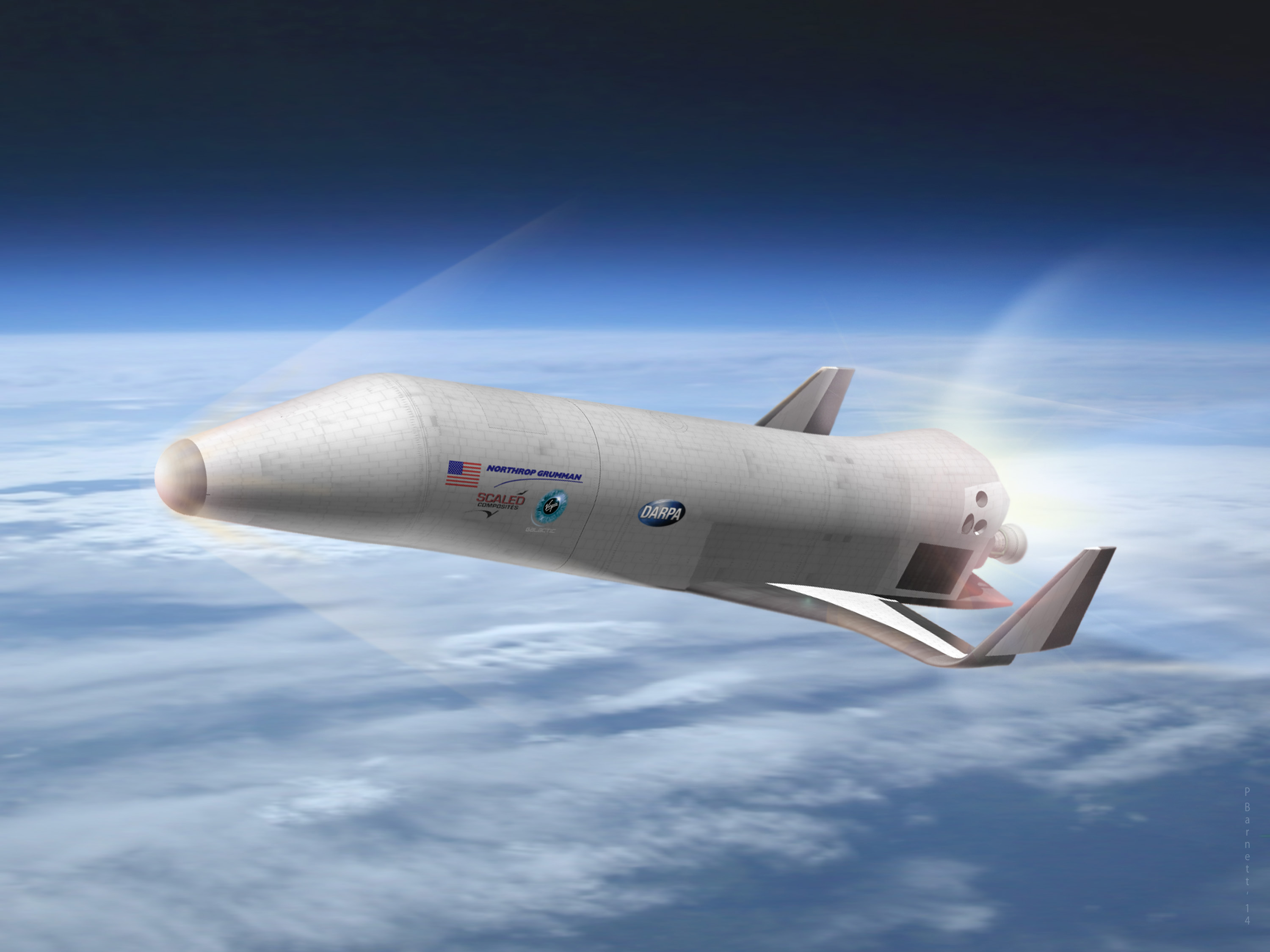
The aerospace giant known as the Northrop Grumman Corporation is a force to be reckoned with, having developed countless radar, sensors, and aircrafts, including the iconic Stealth Bomber. Now, a new project commissioned by DARPA (Defense Advanced Research projects Agency) has the company working on a breakthrough spacecraft capable of launching 10 times in 10 days and reducing the cost of orbital deliveries by tenfold.
The windowless XS-1 is slated to revolution the concept of space-delivery by reducing the cost of transporting a 3,000 to 5,000 lb (1,360 to 2,267 kg) payload into orbit to only $5 million – normally $50 million – with minimal ground crew and infrastructure.
The plan will be executed using a reusable spaceplane booster that lifts off from a combination transporter/erector/launcher and takes full advantage of Northrop’s experience in unmanned aerial flight, using a highly autonomous flight operation system to bring the craft into orbit before returning home and landing in a very airplane-like manner on a standard runway. This combination of reusable booster and aircraft-like operations initiates an entirely new generation of lower cost and resilient spacecraft for payloads in the class, making resupply missions much more viable.
“Our team is uniquely qualified to meet DARPA's XS-1 operational system goals, having built and transitioned many developmental systems to operational use, including our current work on the world's only commercial spaceline, Virgin Galactic's SpaceShipTwo,” said Doug Young, vice president, missile defense and advanced missions, Northrop Grumman Aerospace Systems.
To supplement the XS-1 and its autonomous capabilities, Northrop is partnering with Virgin Galactic, the privately-funded spaceline, to develop a commercial operation for spaceplane, and Scaled Composites of Mojave, to lead the fabrication and assembly.
“We plan to bundle proven technologies into our concept that we developed during related projects for DARPA, NASA and the U.S. Air Force Research Laboratory, giving the government maximum return on those investments,” Young added.
The first-stage DARPA contract, valued at $3.9 million, gives Northrop a 13-month deadline to flesh out the early design.
Source Northrop Grumman
Advertisement
Learn more about Electronic Products Magazine





